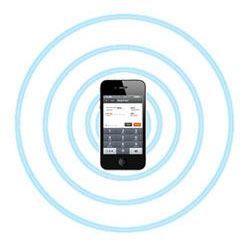Verifone Bluetooth
 Last week was a great week for those of us that watch potential changes to the commerce user experience, particularly as it relates to payment. Many eagerly watched to see what commerce capabilities (if any) would be included in whatever new hardware was announced. Of the few outward hardware changes introduced, appears to be a convenient way to automate purchases from iTunes and/or the app store. Expecting this to eventually extend to 3rd party applications as well seems reasonable. Not having to remember a password in order to log into our favorite banking application would be a welcome feature to many of us.
Last week was a great week for those of us that watch potential changes to the commerce user experience, particularly as it relates to payment. Many eagerly watched to see what commerce capabilities (if any) would be included in whatever new hardware was announced. Of the few outward hardware changes introduced, appears to be a convenient way to automate purchases from iTunes and/or the app store. Expecting this to eventually extend to 3rd party applications as well seems reasonable. Not having to remember a password in order to log into our favorite banking application would be a welcome feature to many of us.
To understand what is really interesting about Touch ID, you have to go back to June, when Apple quietly introduced, a new feature in iOS7 that leverages the capabilities of Bluetooth Low Energy (BLE). It should also be noted that the latest version of Android also supports connection to BLE-enabled devices via Bluetooth Smart. It seems reasonable to expect Apple to eventually combine Touch ID and iBeacon into services and features that could eventually be used in a multitude of real-world applications.
Meanwhile PayPal announced – also using BLE – to help redefine the shopping experience. PayPal essentially is proposing to use BLE as a more accurate form of “indoor-GPS” that doesn’t rely on cloud connectivity operationally. This doesn’t necessarily enable a new payment scheme or require an overhaul of the existing shopping experience, but it certainly has the ability to improve current geo-fencing, store check-in, loyalty, and high-granularity targeting by an order of magnitude.
BLE and the “Shopping Experience”
BLE, also known as Bluetooth Smart, provides a low-power way to communicate wirelessly. Many phones already support BLE and it can be used to transfer data between two compliant devices. As a customer walks into a store, and even as they walk around larger stores where goods of different types are displayed, BLE can help determine the approximate location of the mobile device (and its owner) within the store. This functionality on the shopper’s mobile device would still require a manual or automatic opt-in for privacy reasons, but once the customer was “checked-in, ” the merchant could use BLE as the transport to send the customer targeted offers based on past purchases, offer her a store credit card with a hefty promotional discount, and more. In larger stores, as the customer moves from one counter to another, those offers might change to fit whatever merchandise the customer is near.





